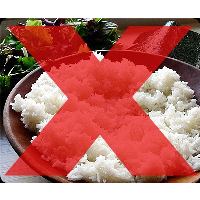Rice Imported from Asia and Europe Contains Harmful Levels of Lead

Rice imported into the United States from certain countries contains high levels of lead, according to research being presented at the American Chemical Society’s annual conference.
According to the Environmental Protection Agency (EPA), high levels of lead can be damaging to “almost every organ and system in your body.” Young children are particularly at risk of suffering from severe developmental problems.
Tsanangurayi Tongesayi of Monmouth University, who headed the analysis of rice imported from Asia, said the U.S. imports only 7% of its rice. But some of it contains dangerous levels of lead that could pose health risks to infants and children, as well as for adults of Asian heritage who consume large amounts of rice.
The research was compiled from samples collected from countries in Asia and Europe, including the Czech Republic, Bhutan, Italy, China, Taiwan, India and Thailand. The highest levels were found in samples from Taiwan and China.
Concerns over lead add to another health risk involving rice—the presence of arsenic.
Researchers have warned that farming practices in Asia have resulted in rice becoming contaminated.
“If you look through the scientific literature, especially on India and China, they irrigate their crops with raw sewage effluent and untreated industrial effluent,” said Tongesayi.
-Noel Brinkerhoff
To Learn More:
High Levels Of Lead Detected In Rice Imported From Certain Countries (American Chemical Society)
US Rice Imports 'Contain Harmful Levels Of Lead' (by Jason Palmer, BBC News)
Childhood Lead Exposure Contributes to Adult Criminal Behavior: 30-Year Study (by Noel Brinkerhoff, AllGov)
- Top Stories
- Unusual News
- Where is the Money Going?
- Controversies
- U.S. and the World
- Appointments and Resignations
- Latest News
- Trump to Stop Deportations If…
- Trump Denounces World Series
- What If China Invaded the United States?
- Donald Trump Has a Mental Health Problem and It Has a Name
- Trump Goes on Renaming Frenzy






Comments